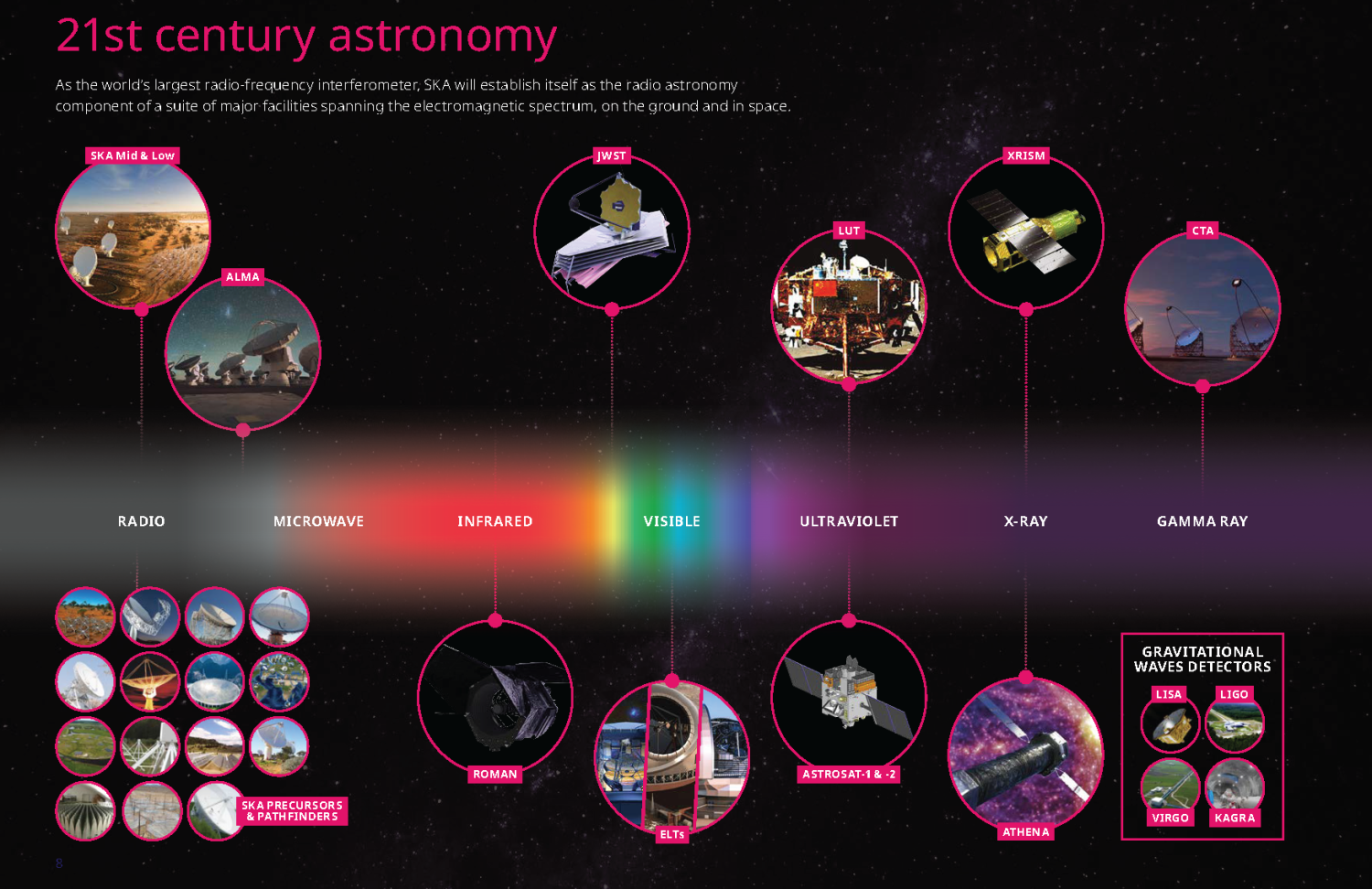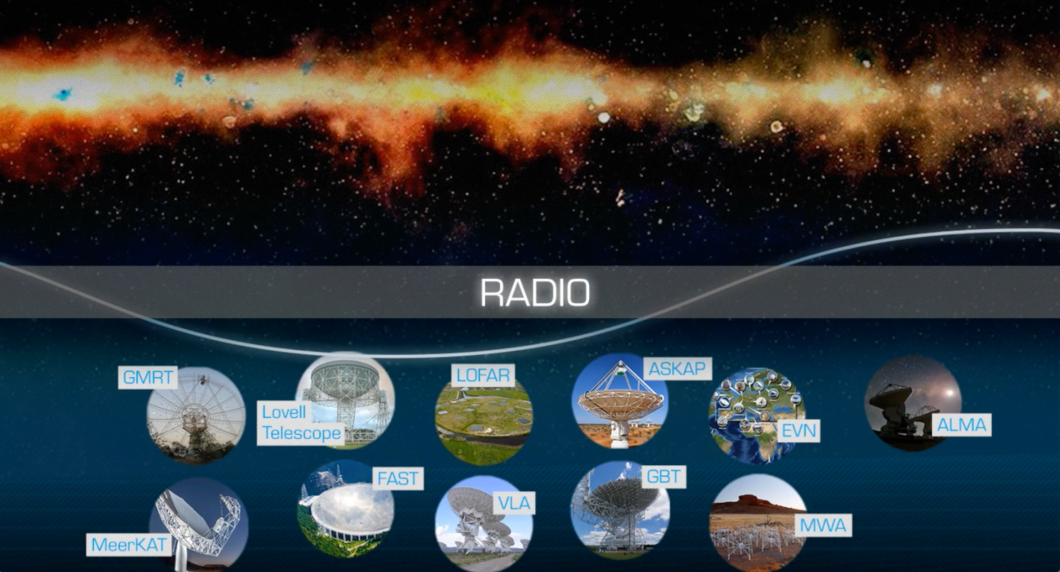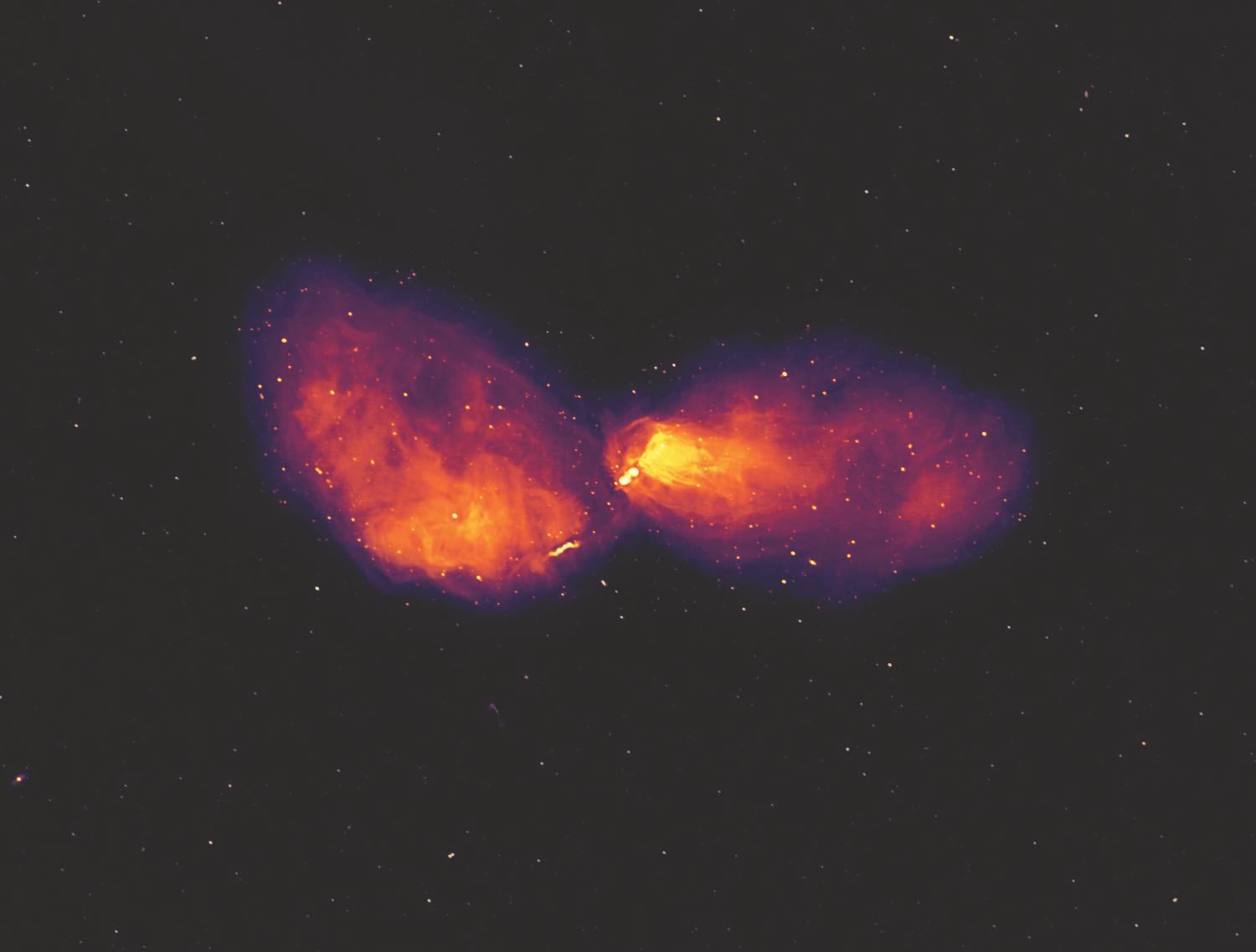What is radio astronomy?
A different view of the Universe
The stunning images taken by optical instruments like the iconic Hubble Space Telescope are famous the world over, but there are many details they cannot see. Radio astronomy reveals parts of the invisible sky. By detecting radio waves emitted by a wide range of astronomical objects and phenomena, radio telescopes provide a totally different view of our Universe.

The electromagnetic spectrum
Humans can see visible light waves, but there are other types of light on the electromagnetic spectrum, ranging from the longest wavelengths (radio) to the shortest (gamma rays).
Even though we can't see them, we are familiar with these different types of electromagnetic radiation in everyday life: ultraviolet (UV) light from the Sun which we know to protect ourselves from, the microwaves which give their name to the kitchen appliance, the infrared light that is seen by thermal imaging cameras, and the X-rays and gamma rays used in hospital procedures such as imaging and radiotherapy. Radio waves, the basis of radio astronomy, are what analogue radios use to transmit into people's homes across the globe.
These different types of light are also emitted naturally by objects in space. Different types of telescopes are used to detect different wavelengths of light.
In the radio frequency part of the spectrum, the SKA telescopes will observe from 50 MHz to 15.4 GHz (with a goal of 24 GHz).

A rapidly evolving science
Since the 1930s, when the first radio signals from space were detected by Karl Jansky, astronomers have used radio telescopes to explore the Universe.
Progress has been swift, with major breakthroughs within the first few decades of radio astronomy observations. Among them, the discovery of pulsars in 1967 by Professor Dame Jocelyn Bell Burnell, then a postgraduate student working at the University of Cambridge. Dame Jocelyn's supervisor, Anthony Hewish, went on to share the Nobel Prize for Physics with Martin Ryle, another notable radio astronomer, in part for this discovery.
More recent headline-grabbing discoveries in radio astronomy include the detection of mysterious rapid bursts of radio waves from unknown sources, which have come to be known as fast radio bursts, and the first ever image of a black hole, achieved by the Event Horizon Telescope Collaboration, a collection of radio observatories spanning the globe.
The SKA telescopes, as the most advanced radio telescopes every constructed, are sure to bring about a host of new discoveries. The scientific motivation behind them is extensive, but perhaps the most exciting discoveries will be those that we have not even imagined yet.

Cosmic energy
Did you know some of the most violent and energetic objects and phenomena in the Universe can only be seen through radio astronomy? Among them are radio jets shooting out from around so-called supermassive black holes (like those in the image on the left). Travelling at near light speed, these jets are the result of unimaginable forces in the heart of active galaxies.
By contrast, radio astronomy is also the key to detecting neutral hydrogen, which releases radio waves in perhaps one of the most sedate phenomena in the Universe; it can take millions of years for one hydrogen atom to release a radio wave!
How do radio telescopes work?
Radio telescopes receive radio waves from space using antennas which traditionally have often looked like a big version of a domestic satellite dish (although other types of antennas are also used, depending on the purpose and requirements of the telescope). Signals that are collected are sent through a processing chain (hardware and software designed to amplify and digitise the signals) which enables the astronomical data ultimately to be turned into an image of the sky.
Find details of how SKA-Low and SKA-Mid work.
Unlike optical telescopes, which can be hampered by cloud or poor weather conditions on Earth, radio telescopes can be used even in cloudy skies, as the longer wavelengths can pass through clouds unhindered.
One of the key capabilities of radio telescopes is that they can detect invisible hydrogen gas, the most abundant element in the Universe, which emits in the radio band at 1420 MHz. They can also reveal areas of space that may be obscured by cosmic dust, as radio waves are can travel through these dust clouds.
That said, to obtain the same level of detail and resolution in their images as their optical cousins, radio telescopes have to be much larger (have a much larger area to collect signals). In fact, to match the resolution you would need a radio telescope kilometres across, which is not possible or practical for a single dish. To get around this limitation in size, radio astronomers use a technique known as interferometry.




